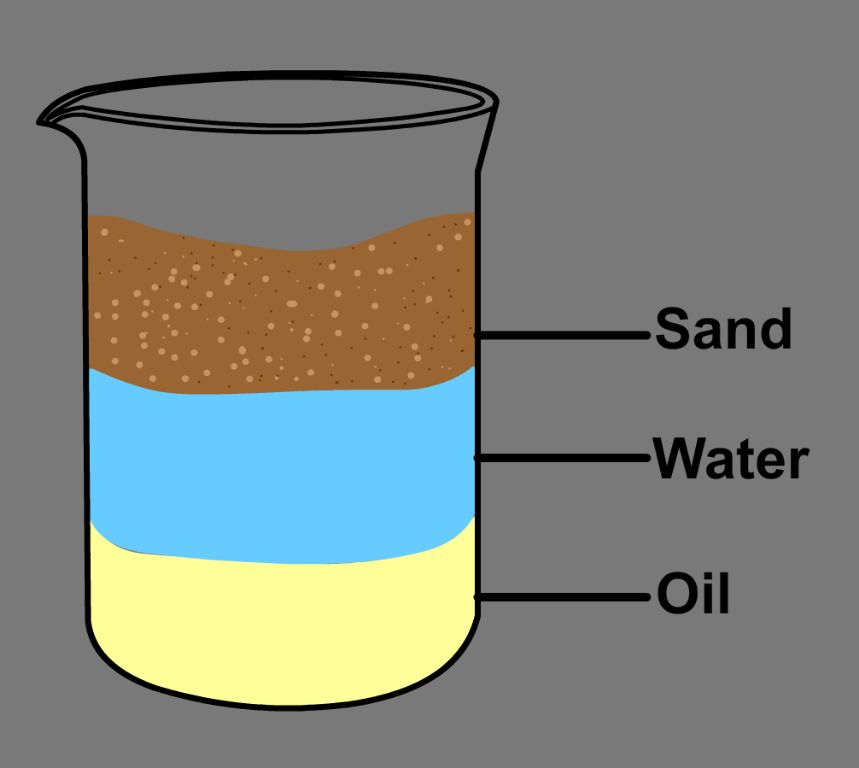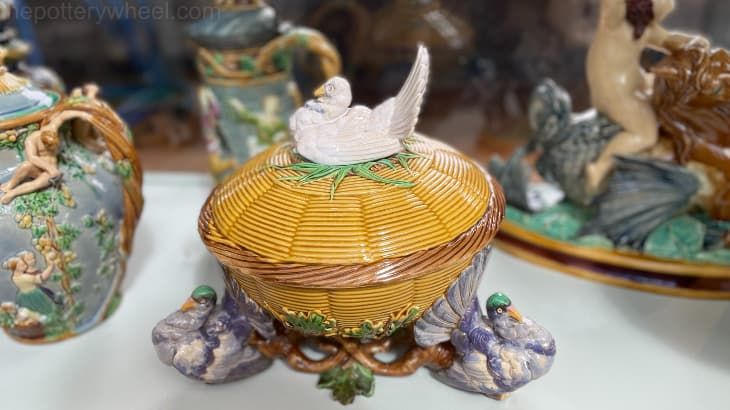How Does Magic Clay Harden?
What is Magic Clay?
Magic clay, also known as modeling clay or self-hardening clay, is a type of moldable clay that air dries into a hard solid. The original magic clay product is Crayola’s Model Magic, first introduced in 1976 [1]. Model Magic is made from a mixture of plaster, wood pulp, and cornstarch combined with water [1]. These ingredients give it a lightweight, non-toxic, moldable texture that air dries into a hard yet lightweight solid over 24-48 hours.
The main properties that distinguish magic clay are that it is lightweight, air-dry, and easy to mold before hardening permanently. Unlike oil or polymer modeling clays, magic clay does not require baking or firing to set it. It will harden through water evaporation when exposed to air. The finished product is solid but still lightweight and easy to paint or decorate. Magic clay can be molded into any shape which retains fine detail. It does not shrink or crack as it dries.
[1] https://www.crayola.com/things-to-do/how-to-landing/model-magic/
Mechanism Behind Hardening
Plaster of Paris, also known as gypsum plaster, hardens through a chemical reaction with water (hydrogen, “How does plaster of Paris harden when mixed with water?,” Quora, https://www.quora.com/Why-does-Plaster-of-Paris-become-hard-upon-mixing-with-water). When mixed with water, the calcium sulfate hemihydrate (CaSO4·1⁄2H2O) in plaster of Paris forms calcium sulfate dihydrate crystals (CaSO4·2H2O), a process known as crystallization (“What causes plaster of Paris to harden when left …,” BYJUS, https://byjus.com/question-answer/what-causes-plaster-of-paris-to-harden-when-left-undisturbed-after-mixing-with-water/).
Specifically, the plaster powder dissolves in water and forms a saturated solution. As the water evaporates or the plaster dries, crystals begin to form from the solution. The interlocking of these needle-like gypsum crystals gives hardened plaster its strength and rigidity.
Factors Affecting Hardening Time

There are several key factors that affect how quickly magic clay will harden:
Plaster to Water Ratio
The ratio of plaster to water when mixing the magic clay is crucial. A higher plaster content will result in a faster setup time. Typical mixing ratios are 2 parts plaster to 1 part water by weight [1].
Ambient Temperature
Higher ambient temperatures will accelerate the hardening process, while colder temperatures will slow it down. Ideally the temperature should be between 60-80°F during drying [2].
Kneading/Mixing
The more the magic clay is kneaded and mixed, the faster it will harden. Extended kneading promotes chemical reactions between the plaster and water. Lightly mixing just until combined allows for a slower setup time [3].
Hardening Stages
Magic clay goes through several distinct stages as it hardens:1
Initially, the clay is in a moldable, dough-like state. At this stage, it can be freely shaped and molded into different forms.
As the clay starts to lose moisture, the hardening process begins. Crystalline structures start to take shape within the clay as it enters the setting phase. Though still pliable, it becomes harder to reshape the clay.
In the final hardened stage, the clay has fully transformed into an interlocking crystalline matrix. It becomes completely rigid and difficult to alter the shape. The hardening process is complete once the clay reaches this final crystalline state.
Strength and Durability
One of the key properties of magic clay is that it rapidly hardens and gains strength, especially during the first 24 hours after molding. This is due to the formation of interlocking crystals within the clay as the water evaporates.
During the initial hardening phase, the clay transforms from a soft, malleable putty to a firm, durable solid. Tests show the clay can withstand over 100 lbs of force per square inch after 24 hours of hardening under normal conditions. The precise strength continues to increase over the first week as more bonds form between the crystalline structures.
Remarkably, magic clay can harden even when submerged underwater. The evaporating moisture is simply replaced by the surrounding water, allowing the hardening process to continue normally. Once hardened, pieces made from magic clay remain durable and maintain their strength even when exposed to moisture, due to the tightly bonded crystalline matrix.
This strength and water resistance allows magic clay to be used for a wide variety of applications, both dry and wet. Pieces can be handled and used normally without concerns over deterioration or breakage. The clay remains firm and structurally sound instead of softening from exposure to water.
Uses and Applications
One of the most popular uses of magic clay is molding it into shapes and figures. Its pliable texture makes it easy for kids and adults alike to form anything they can imagine, from simple shapes like balls and snakes, to more complex creations like animals, vehicles, buildings, and more. Magic clay holds its shape nicely once molded, making it great for free-form sculpture.
Magic clay is also commonly used for craft projects and decorations. It can be rolled flat and cut into shapes using cookie cutters or craft punches. These shapes can then be assembled into collages, jewelry, ornaments, mobiles, and many other crafty decorations. Magic clay adheres well to itself, allowing pieces to be joined and layered easily.
Another unique use of magic clay is imprinting textures into its surface. Its malleable properties allow imprinting with textured items like coins, seashells, leaves, fabric, corrugated cardboard, etc. This gives projects made with magic clay an interesting dimensional look and feel.
Safety Considerations
While magic clay can be a fun craft material, there are some safety precautions to keep in mind:
Avoid prolonged skin contact – The oils in magic clay can dry out skin with repeated, extended contact. Wash hands after handling and avoid getting clay on other skin areas.
Dust inhalation – Magic clay releases fine dust when sculpting that can be inhaled. Work in a ventilated area and consider wearing a dust mask.
Proper disposal once hardened – Fully hardened magic clay is non-toxic but not biodegradable. Do not litter finished sculptures. Dispose in the trash or recycle if possible.
Storage and Shelf Life
Magic clay can be stored for extended periods if properly sealed and kept away from air. The clay manufacturers recommend storing unused clay in an airtight plastic container or resealable bag. This prevents the clay from drying out and extends its shelf life.
When stored properly in an airtight container, magic clay will typically last 6-12 months before beginning to dry out and harden. The exact shelf life depends on the clay thickness and storage conditions. Thinner pieces dry faster. Storing clay in a cool, dry place helps maximize shelf life.
If magic clay does start to dry out, it can often be restored by kneading in a small amount of water. This rehydrates the clay and makes it pliable again for sculpting. However, clay that is fully hardened cannot be restored. So it’s best to seal clay in an airtight container between uses to keep it fresh.
Properly stored magic clay maintains its soft, pliable texture for sculpting and play. Sealing the clay from air exposure is the key to extending its usable shelf life before the irreversible hardening process begins.
Vs Other Clays
Magic clay like Crayola Model Magic has some distinct differences when compared to other types of clays:
Compared to polymer clays like Sculpey, magic clay is air-dry while polymer clays require baking to harden. Magic clay remains lightweight and flexible when dry, while polymer clays become hard and rigid after baking. Polymer clays allow for more detailed sculpting and shaping. Magic clay is simpler to use and dries faster, but can crack more easily over time. [1]
Vs natural clays like pottery clay, magic clay doesn’t require firing in a kiln to harden. It air dries at room temperature. Natural clays can be prone to shrinking and cracking during drying and firing, while magic clay retains its shape as it dries. However, natural clays are heavier, more durable, and can be glazed unlike magic clay. Magic clay works well for lightweight crafts and modeling vs sturdier ceramic items.
The main advantages of magic clay are its simplicity and ease of use. It air dries quickly without baking or firing, is lightweight and flexible when dry, and requires no special tools or equipment. The tradeoff is that it can’t achieve the same level of detail and durability as other clays. Still, magic clay is great for casual modeling, crafts, and projects where a lightweight material is desired.
Fun Facts
Magic clay has a long history of artistic and practical uses. Some interesting facts about its origins and applications include:
The earliest known clay figurines made by humans date back over 20,000 years to the Stone Age, with examples found at archaeological sites in central Europe and Eurasia (https://www.llewellyn.com/journal/article/3116). Magic clay’s malleability has allowed it to be shaped into figures and shapes for artistic, ritualistic, and even magical purposes throughout history.
Clay tablets were one of the earliest writing surfaces, used in ancient Mesopotamia, Egypt and the Mediterranean to write texts in cuneiform, hieroglyphs and early alphabets. Magic clay’s ability to harden when baked allowed these tablets to be durable writing surfaces.
Clay pots and vessels for cooking and storage have been made since at least 9,000 BCE, with evidence found in East Asia and North Africa. The development of glazing techniques allowed these vessels to hold water and be impermeable.
In the 19th century, magic clay’s softness and cleanliness made it a popular children’s toy for molding and shaping. It remains a classic creative material for kids today.
Magic clay’s versatility to be hardened and fired, yet also stay malleable, has allowed artists to use it for sculpting, modeling architectural concepts, creating decorative items, and more. It is valued for being inexpensive, reusable, and easy to work with.


